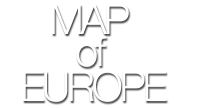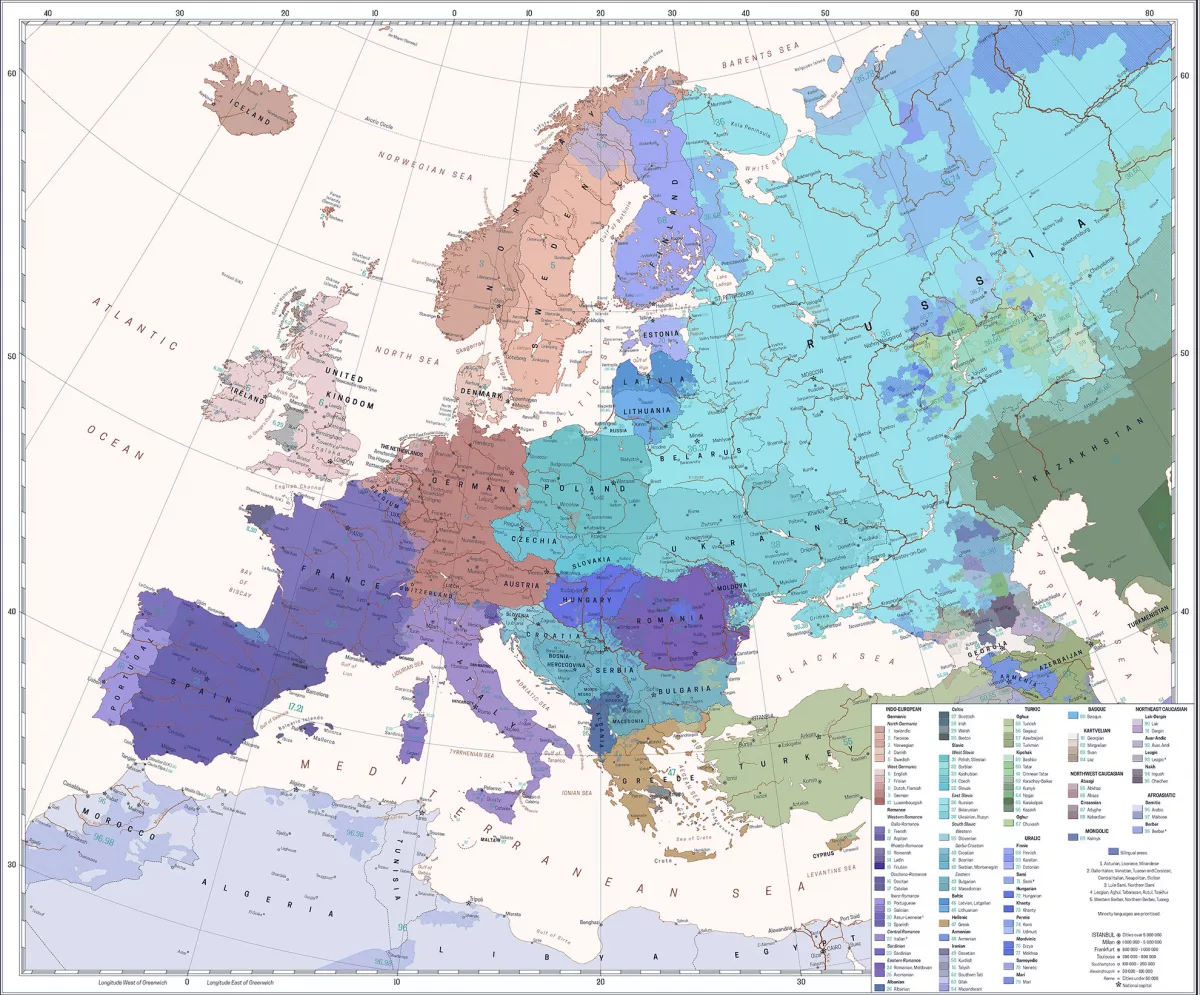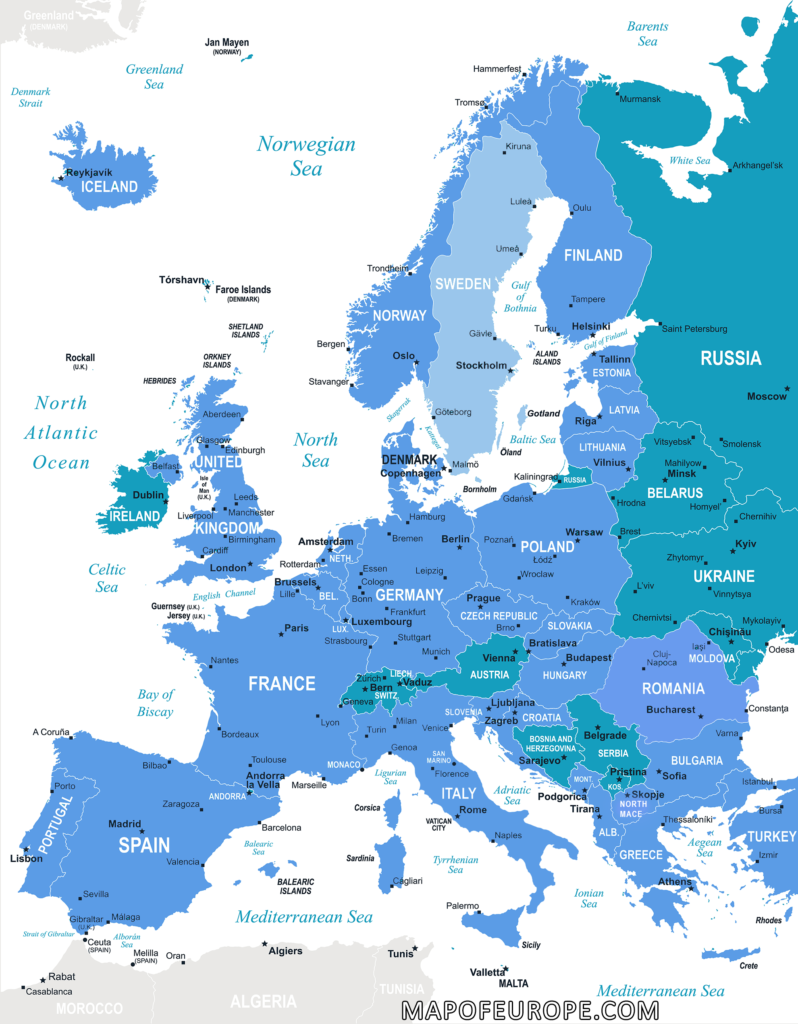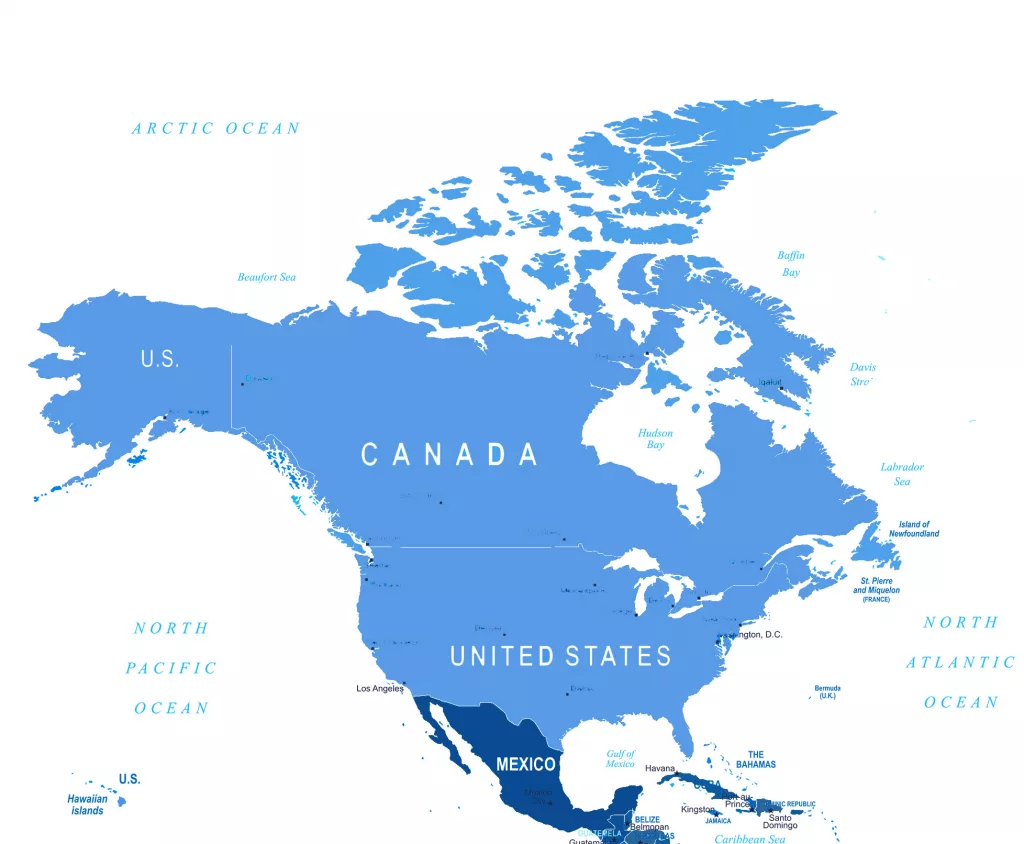Europe is known for its cultural diversity, which is reflected in the numerous languages and ethnic groups that call the continent home. From the Romance languages spoken in the south to the Slavic languages spoken in the east, Europe’s linguistic landscape is diverse and fascinating. In this article, we’ll explore the languages and ethnic groups of Europe, and take a look at how they are represented on a map.
Languages of Europe
Europe is home to more than 200 languages, which can be grouped into several language families. The largest and most widely spoken language family in Europe is the Indo-European family, which includes languages such as English, German, French, Spanish, Italian, Russian, and Polish. Other language families spoken in Europe include the Uralic family (Finnish, Estonian, and Hungarian), the Turkic family (Turkish, Azerbaijani, and Tatar), and the Semitic family (Arabic and Hebrew).
The distribution of languages in Europe is not evenly spread out. English is widely spoken throughout Europe, especially in countries like the United Kingdom, Ireland, and Malta. Spanish and French are also popular languages, spoken in Spain, France, Belgium, and Switzerland. German is the most widely spoken language in Germany, Austria, and Switzerland, and is also spoken in parts of Belgium, Italy, and Denmark.
Eastern Europe has a high concentration of Slavic languages, such as Russian, Ukrainian, Polish, and Czech. The Baltic states of Estonia, Latvia, and Lithuania also have their own unique languages, which belong to the Baltic language family. In the Balkans, a region located in southeastern Europe, a number of Slavic, Romance, and other languages are spoken, including Serbian, Croatian, Romanian, and Greek.
Ethnic Groups of Europe
Europe is also home to a wide variety of ethnic groups, each with its own unique traditions and cultural practices. The largest ethnic group in Europe is the Germans, who make up about 16% of the population. Other major ethnic groups in Europe include the French, British, Italians, Spaniards, and Poles.
However, there are many smaller ethnic groups in Europe as well. For example, the Roma people, who are often referred to as gypsies, are a nomadic ethnic group that can be found throughout Europe. Other ethnic groups with significant populations in Europe include the Albanians, Turks, and Greeks.
The distribution of ethnic groups in Europe is not uniform. Some regions have a high concentration of certain ethnic groups, while other regions are more diverse. In eastern Europe, for example, there are significant populations of Russians, Ukrainians, and Belarusians. In the Balkans, there are a number of ethnic groups, including Serbs, Croats, Bosniaks, and Albanians.
Mapping Europe’s Cultural Diversity
So, how can we represent Europe’s cultural diversity on a map? One way is to use a choropleth map, which shades different regions based on the prevalence of a particular language or ethnic group. For example, a choropleth map of Europe could show the prevalence of Romance languages in the south, Slavic languages in the east, and Germanic languages in the north and west. Similarly, a choropleth map could show the distribution of ethnic groups throughout Europe, highlighting regions with significant populations of Germans, French, Roma, and other groups.
Another way to represent Europe’s cultural diversity is through a dot density map. This type of map uses dots to represent individual speakers of a particular language or members of an ethnic group. For example, a dot density map of Europe could show the distribution of speakers of the various Romance languages, with each dot representing one speaker. Similarly, a dot density map could show the distribution of ethnic groups throughout Europe, with each dot representing one member of the group.
In addition to these map types, interactive maps can also be used to represent Europe’s cultural diversity. These maps allow users to explore different regions of Europe and learn more about the languages and ethnic groups that are prevalent in those areas. Interactive maps can also provide additional information about each language or ethnic group, such as its history, traditions, and cultural practices.
The Benefits of Mapping Europe’s Cultural Diversity
Mapping Europe’s cultural diversity has a number of benefits. First and foremost, it helps to raise awareness about the rich cultural heritage of Europe. By showing the distribution of languages and ethnic groups on a map, people can gain a better understanding of the diversity that exists within Europe.
Mapping Europe’s cultural diversity can also help to promote tolerance and understanding between different groups. By highlighting the prevalence of different languages and ethnic groups, people can learn to appreciate and respect the cultural differences that exist within Europe. This can help to reduce discrimination and promote social cohesion.
Finally, mapping Europe’s cultural diversity can be useful for a variety of practical purposes. For example, it can help policymakers to design language and cultural programs that are tailored to specific regions of Europe. It can also help businesses to target their marketing efforts to specific language or ethnic groups.
Europe’s cultural diversity is one of its greatest strengths. By mapping the distribution of languages and ethnic groups throughout Europe, we can gain a better understanding of the richness and complexity of European culture. Whether through choropleth maps, dot density maps, or interactive maps, there are many ways to represent Europe’s cultural diversity on a map. By doing so, we can promote tolerance, understanding, and appreciation for the diversity that exists within Europe.




